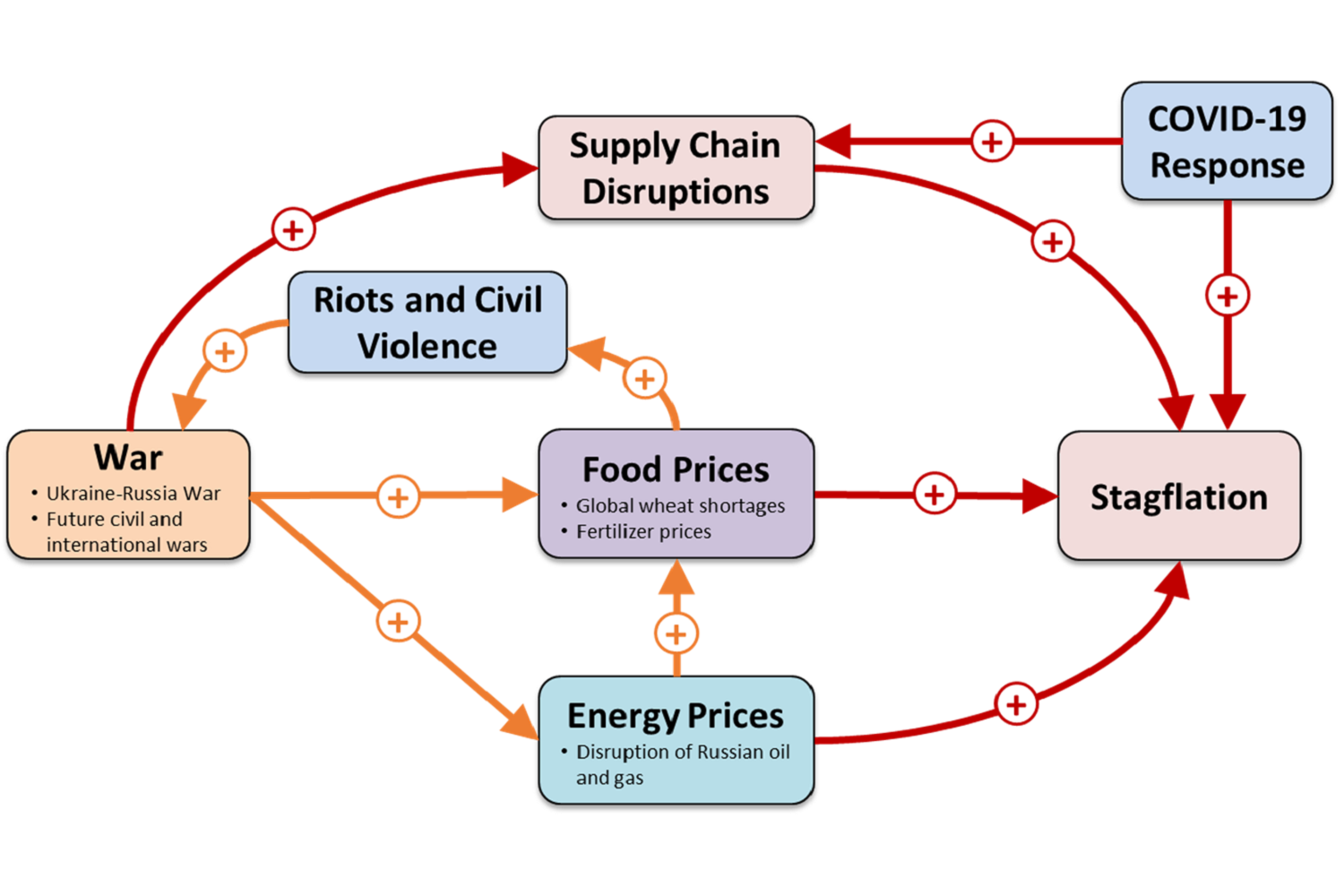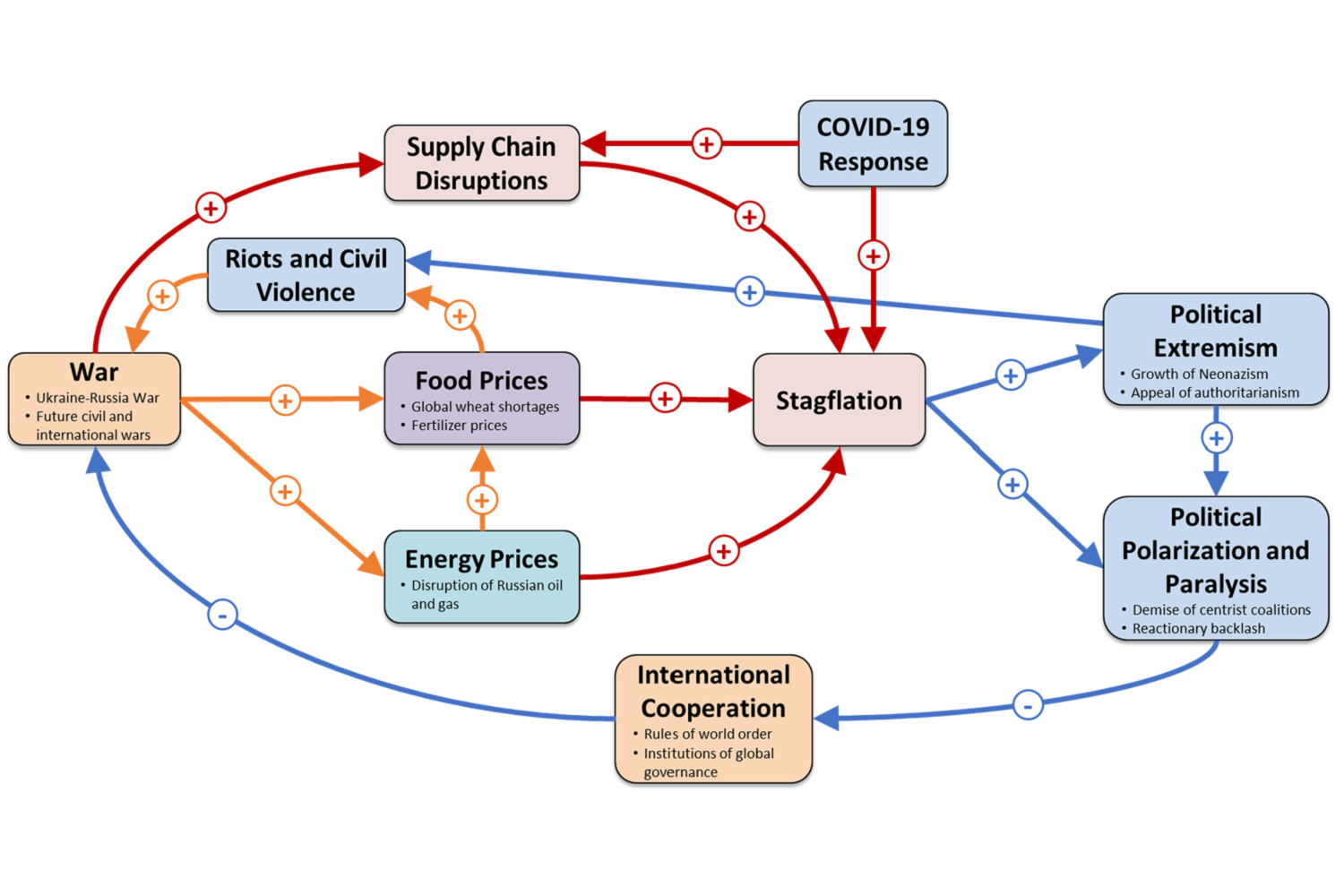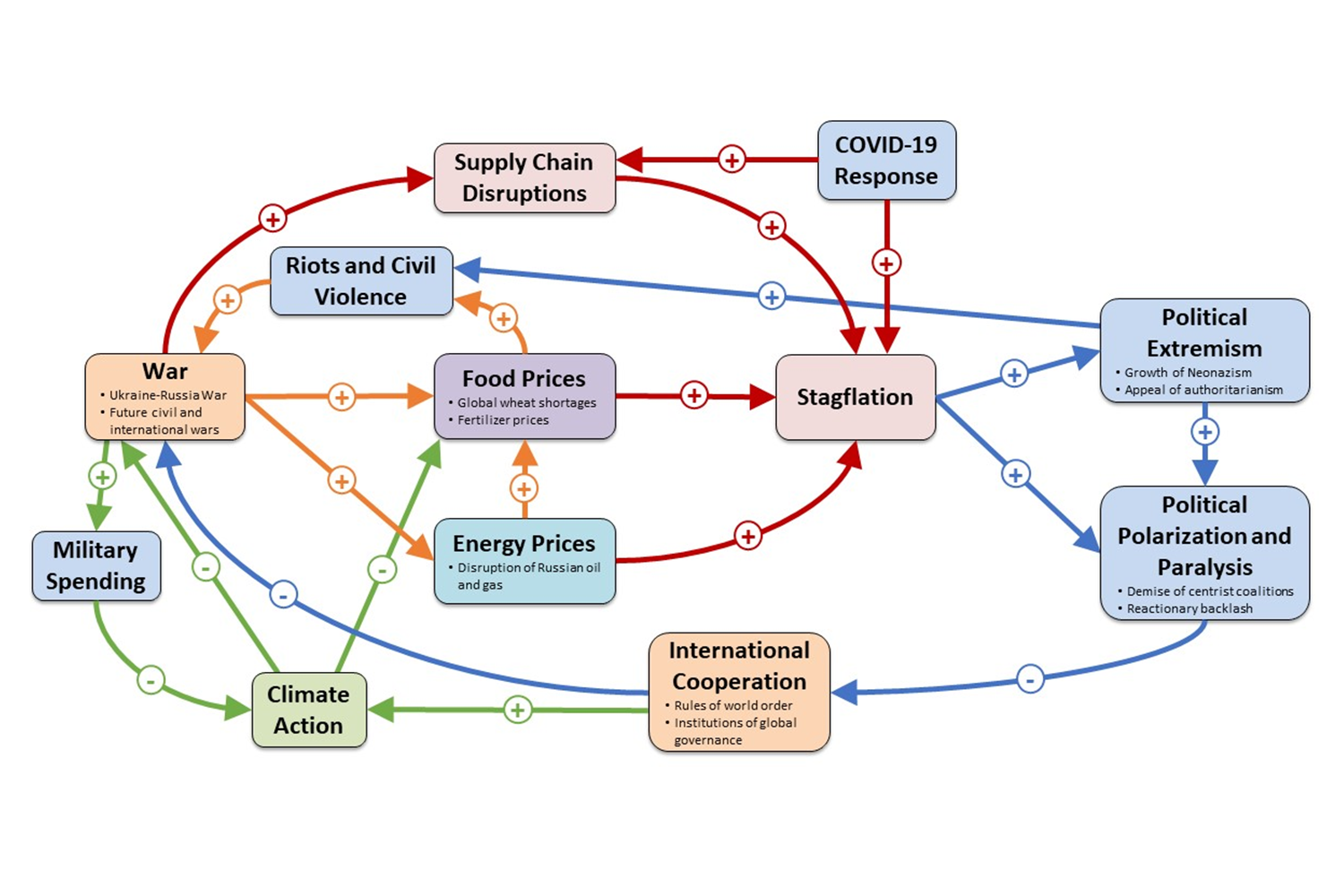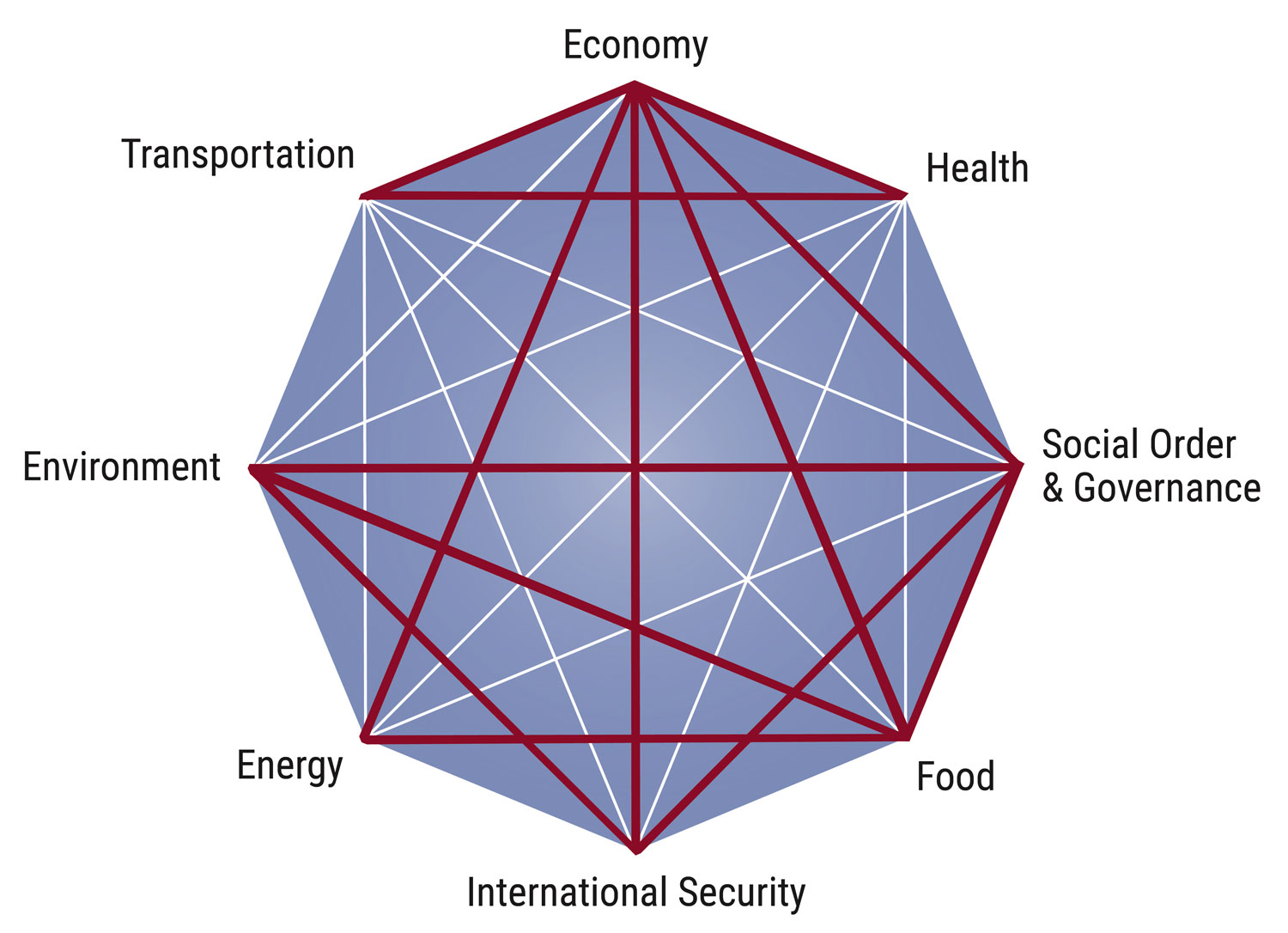Michael Lawrence
Russia’s illegal invasion of Ukraine came at an already precarious moment, as the world grappled with the ongoing COVID-19 pandemic, growing tensions with China, and the economic dislocations arising from both challenges. Mainstream commentators quickly recognized that the war’s effects would extend beyond geopolitics and create crises in food and energy systems, exacerbating economic downturns and threatening millions of people around the world. Most of the commentary stopped there, but the war’s global systemic consequences did not.
Shortly after Russia’s invasion, in March and May 2022, the Cascade Institute convened a multi-disciplinary panel of globally recognized experts to assess the war’s interactions with other systemic risks, including the climate crisis, economic stagflation, and deepening ideological polarization. The experts identified several emerging feedback loops connecting these additional concerns to the food, energy, and economic crises stemming from the war.
In the causal-loop diagrams below, boxes represent crises in global systems distinguished by colour: international security, domestic governance, food, energy, economy, and environment. Arrows represent causal links between crises. Arrows marked with a + sign indicate that the two factors increase or decrease together, while arrows marked with a – sign indicate an inverse relationship (i.e., an increase in the first leads to a decrease in the second; a decrease in the first produces an increase in the second).

The war-energy-food loop (orange arrows) captures the immediate effects of the Russian invasion on global food and energy systems. Rising food prices have particularly acute psychological effects on individuals and communities that then inflame existing social tensions and contribute to civil violence, as we’ve seen recently in Sri Lanka and Haiti. The results can be state failure, civil war, and humanitarian catastrophe.
In the global economic downturn loop (red arrows), food and energy price shocks interacted with the war’s supply chain disruptions to contribute to stagflation in the world economy. Stagflation was compounded by massive deficit spending and interruptions to production, trade, and travel arising from the COVID-19 pandemic.
Over the longer term, the Institute’s expert team concluded, two other feedback loops involving political and environmental factors are likely to amplify these causal processes, as shown in the expanded diagrams below.
The political-ideological loop (blue arrows) captures the relationship between growing economic hardship and the rising appeal of hyper-nationalist ideologies of authoritarian leaders like Vladimir Putin and Victor Orbán and of proliferating racist and conspiratorial movements. When such ideologies enter mainstream politics, they can paralyze domestic political institutions, undermine international cooperation, and generate an increasingly conflictual and anarchic world order.

And in the climate change-conflict loop (green arrows), which operates over a time span of decades, the decline of international cooperation weakens global climate action and worsens the climate crisis. More frequent and devastating weather events (including droughts, flooding, and severe storms) produce further strains on the global food supply and contribute to violent conflict through mass displacement and resource scarcity. As individual governments devote more and more of their resources to security spending, climate action suffers even further.

Through these inter-systemic effects, Russia’s invasion of Ukraine is worsening multiple global crises in complex causal chains that ultimately increase the risk of further violent conflict and the collapse of international order, with potentially disastrous consequences for human well-being.

